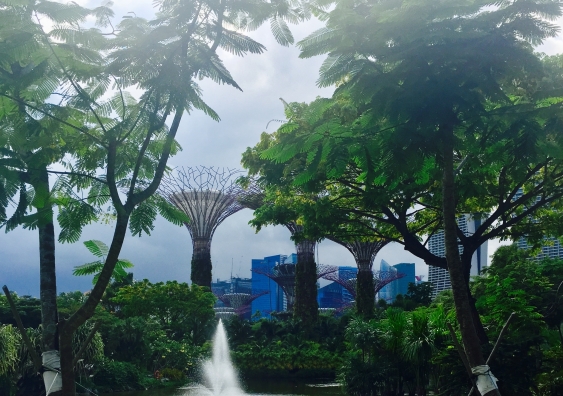Green Infrastructure Needed to Future-Proof the City
Published on by Robert Brears, Founder of Our Future Water, Young Water Leaders, Mitidaption & Author (Springer Nature, Wiley) in Academic
A team of UNSW research students are urging regulators to properly consider green infrastructure when setting charges for new property developments.
By LUCY CARROLL
A team of UNSW research students are urging regulators to properly consider green infrastructure – natural drainage, tree canopies and green walls – when setting charges for new property developments.

Sustainable design at Singapore Botanic Gardens. Photo: Supplied
A review by Masters of Urban Policy students found that a new approach to green infrastructure that involves better funding and regulation is essential to keep pace with Sydney’s population growth and housing density.
The research comes on the back of the NSW Independent Pricing and Regulatory Tribunal (IPART) calling for public submissions to its review of the costs developers pay to provide water, sewerage and stormwater infrastructure to new developments.
“There is a common misconception among developers and governments that green infrastructure costs too much. We’ve been able to show that when green infrastructure is valued accurately, that is not the case,” said UNSW Urban Policy student Alex Lawrie.
“Often green solutions reduce the overall cost of stormwater in new developments, and keep maintenance costs down over the long- term.”
Lawrie and the researchers are calling on the NSW government and IPART to transition to a new way of valuing green infrastructure, with clear goals and established funding.
“All around the world we have found that when leaders get behind green infrastructure, it tends to happen. We see this in cities like Vancouver, Manchester and Singapore where leaders have taken a long-term approach to greening their cities, with big pay-offs both economically, environmentally and in community health and well-being,” said Lawrie.
The UK and the Netherlands have already shifted to systems that fully account for the costs and benefits of green infrastructure over the long term, and New York is saving almost $3.5 billion annually in meeting water quality targets by going green.
As housing costs skyrocket, developer contributions are even more contentious, said Lawrie, and could add roughly the same amount as stamp duty to the cost of housing.
“Developers pass these charges on to home buyers sometimes with mark-ups of up to of 400%," he said.
“Green infrastructure connects those vital blue and green spaces dotted around our magical city. Using developer charges to bring nature back into the way we service our suburbs with infrastructure can bring down the cost of housing.”
The researchers argue delivering sustainable infrastructure in Sydney’s suburbs can help the city maintain its Global City status.
“Green infrastructure can be Sydney’s saviour. Our global competitors such as London, Singapore and Vancouver are all moving in this direction. We risk falling behind if we don’t go down this path,” said Lawrie.
Attached link
https://newsroom.unsw.edu.au/news/art-architecture-design/green-infrastructure-needed-future-proof-cityMedia
Taxonomy
- Drought
- Flood Management
- Infrastructure
- Integrated Infrastructure
- Flood management
- Green Technology
- Green Building
- green infrastructure
1 Comment
-
Absolutely right decision.Destroying the soil under the house, we must return the nature of the natural inhabitants destroyed under the house.This is possible if the walls and roofs of the houses are covered with vegetation.